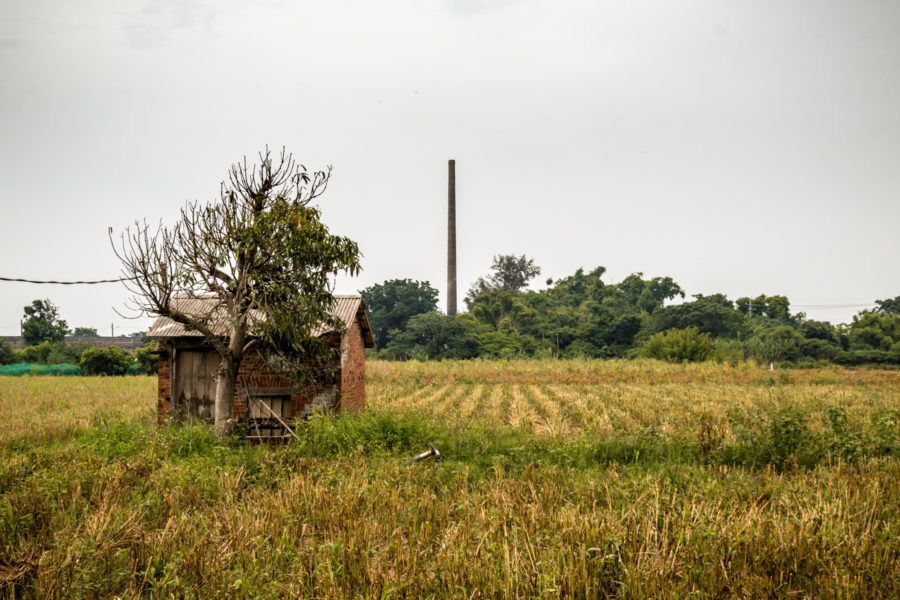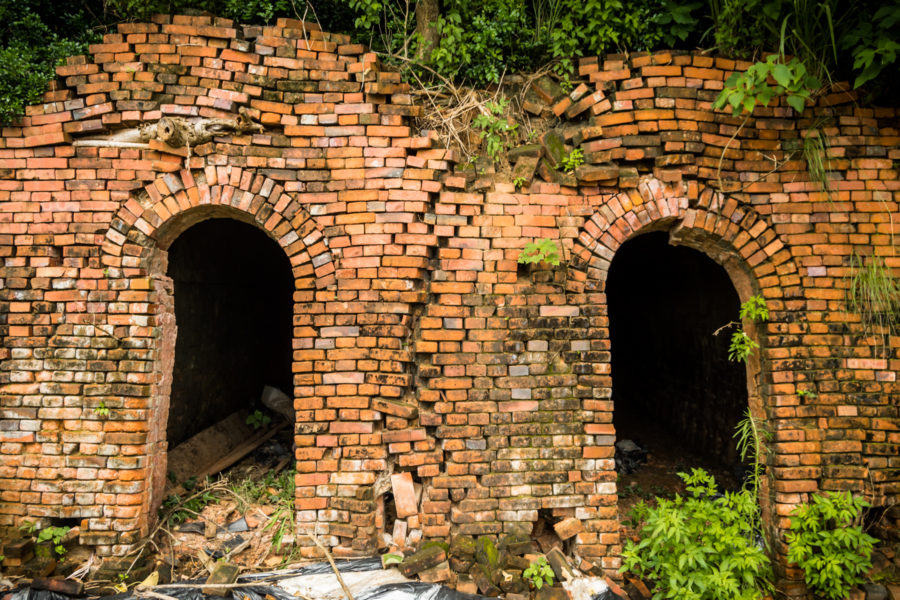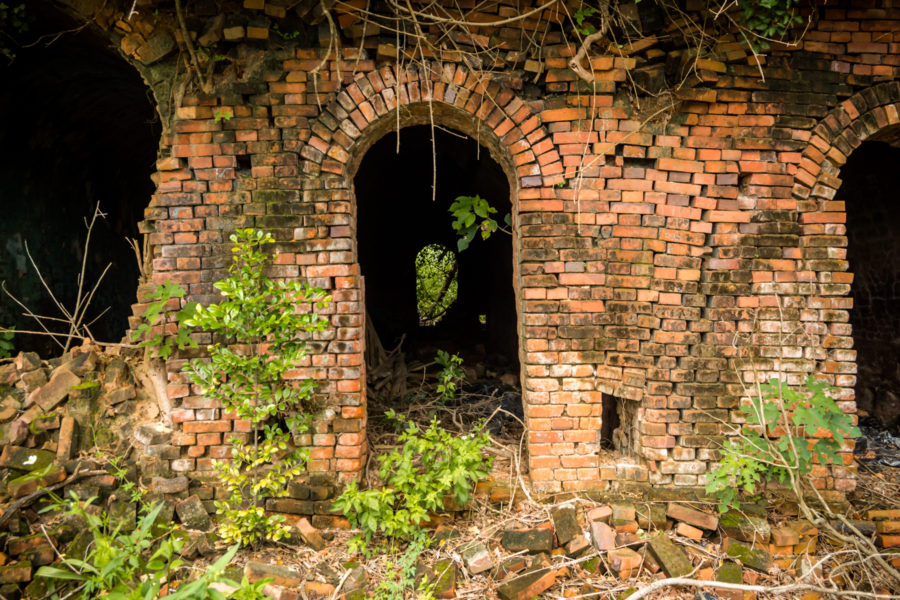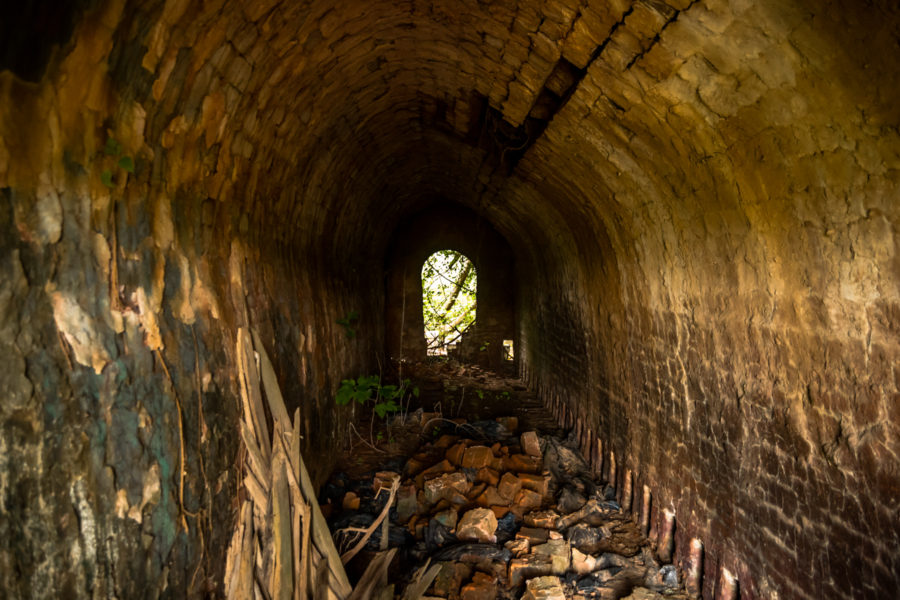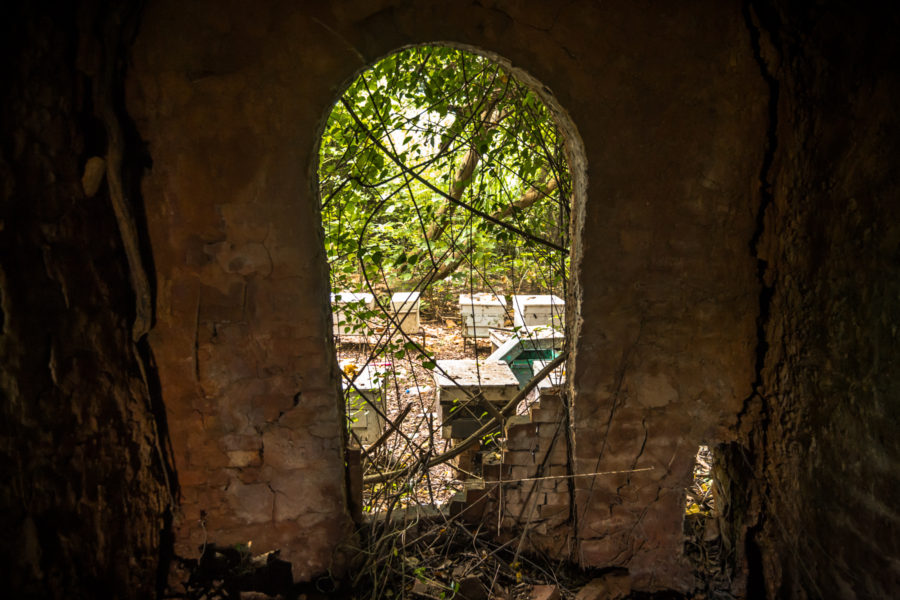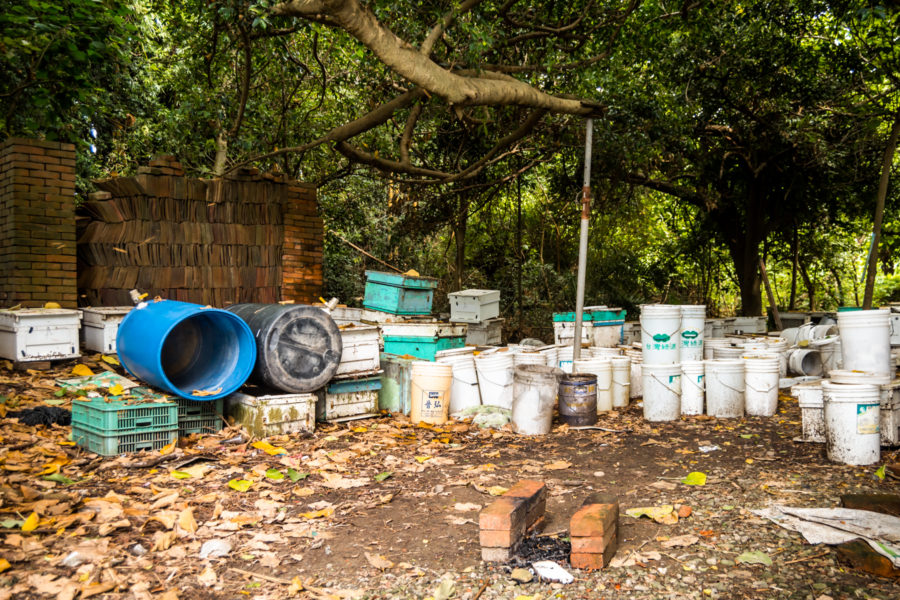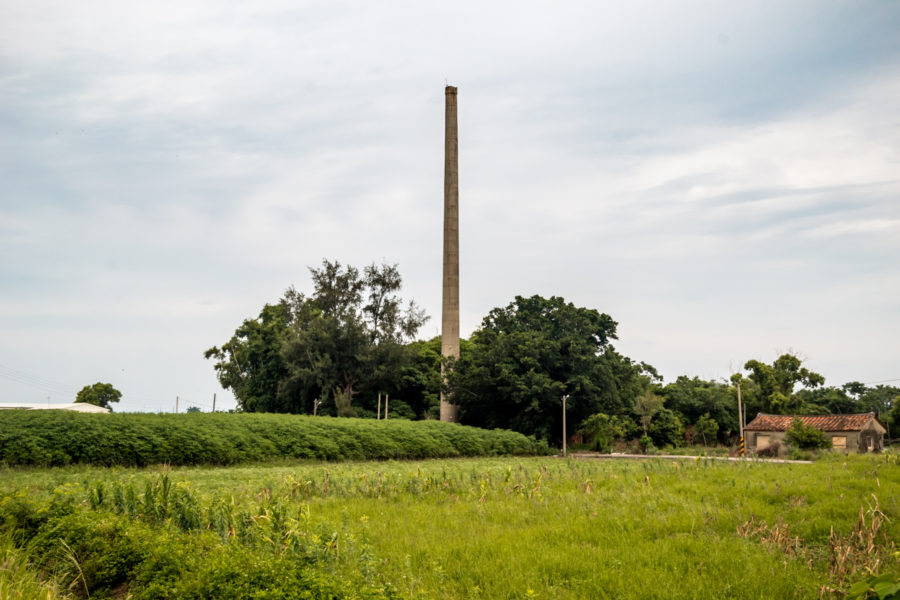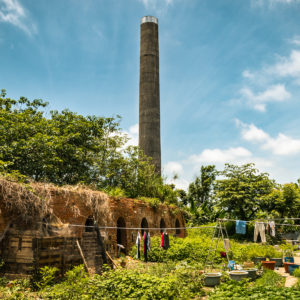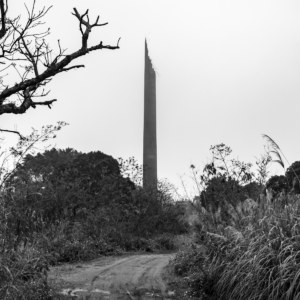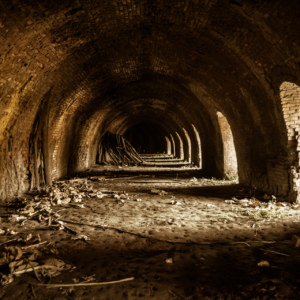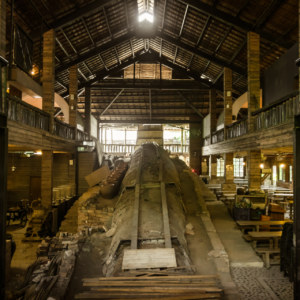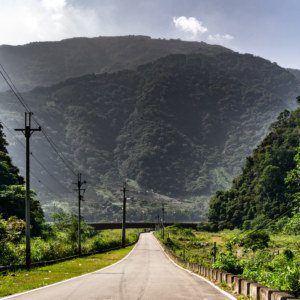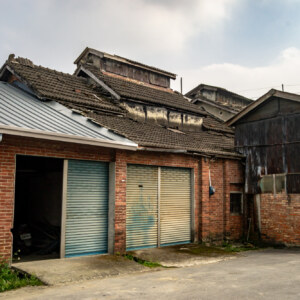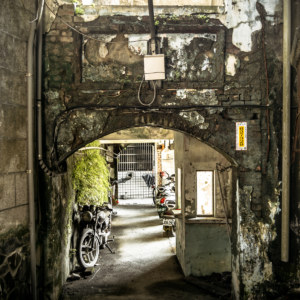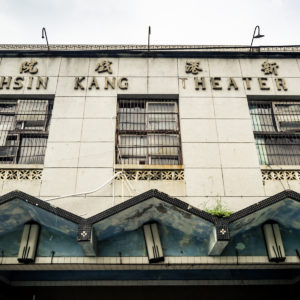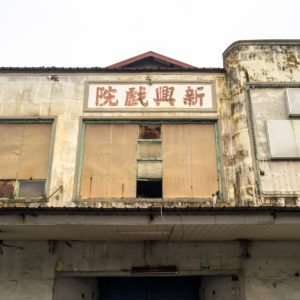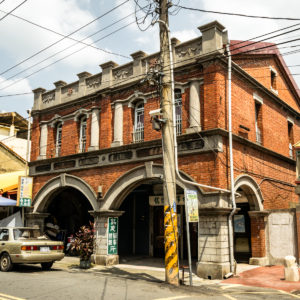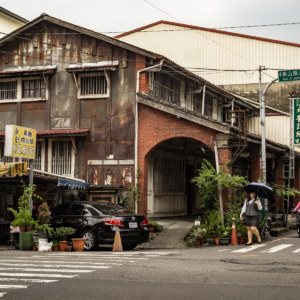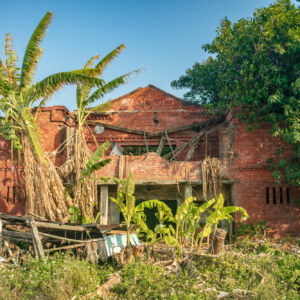Recently I wrote about the Liùjiǎo Brick Kiln 六腳磚窯, an obscure abandonment in rural Chiayi, Taiwan. While attempting to find out more about that kiln I found a reference to a second abandoned kiln in the area, the Shuāngxīkǒu Brick Kiln 雙溪口磚窯, informally named after the closest village in neighboring Puzi. Weeks after visiting the first kiln I returned to scope out the second and—insofar as I can tell—only other remaining brick kiln in this expanse of the Chianan Plain 嘉南平原. It was a hazy, grey day out there so these photos aren’t nearly as nice as those of the other kiln, but in the interest of adding a little something to the historic record I’m sharing them here anyway.
The design of this kiln is almost identical to that of the nearby Liujiao Brick Kiln so I highly recommend reading that piece for a basic introduction. Both kilns are eye kilns (mùzǐyáo 目仔窯), presumably a variation on the classic climbing kiln (dēngyáo 登窯), which is ordinarily built on a slope to take advantage of the tendency for hot gas to rise (and therefore move through the length of the kiln). Few slopes exist in the lowlands of Chiayi so these kilns employ chimneys (or flues, to be technical about it) to create the pressure differential that pulls hot gas from one end of the kiln to the other. There are, however, two ways in which these kilns appear to differ: this one has a much taller chimney and seems to have been built on a slight incline. All other things being equal, this would imply that the kiln in Shuangxikou was more fuel-efficient than the one in Liujiao, with its shorter chimney and lack of any noticeable slope.
I haven’t been able to find any credible information about the histories of either kiln but it’s a safe bet both operated during the booming decades of the Taiwan economic miracle from the 1960s to the 1980s much like some other kilns I’ve written about. The eye kiln design harkens back to the Japanese colonial era but the chimney is almost certainly a product of the post-war period. There’s a chance a new chimney was constructed after these kilns were in operation but my guess is that they’re nowhere near as old as their more famous eye kiln cousins in Yilan and Jiji1.
Whereas the kiln in Liujiao is used for storage by the adjacent housing complex this kiln is far from any residence. Some enterprising local has taken advantage of the shelter afforded by the bulk of the kiln to open an apiary—a place where honey bees are kept. You can imagine my surprise when I pulled up, shut off the engine, and heard the incessant drone of thousands of bees busy at work. Since I am still not entirely sure whether I am allergic to beestings or not I declined to get too close to the hives.
Neither kiln is likely to be conserved but there is a small chance this particular kiln may end up attracting the attention of policymakers in government. Shuangxikou Brick Kiln is quite close to the newly opened Southern Branch of the National Palace Museum 國立故宮博物院南部院區 and Zhèchéng Cultural Park 蔗埕文化園區, which occupies the grounds of the old Suàntóu Sugar Factory 蒜頭糖廠. Both are well-integrated with the high-speed rail station and there is talk of creating a link with the old sugar railway network. If these ventures are successful in attracting more tourists to the area perhaps there will be some interest in restoring this kiln and including it on tours. Personally I find it much more interesting to visit the original sites of traditional industries rather than see a sanitized version in a museum setting—but I realize there’s only so much funding and interest to go around. So there you have it: another exceedingly obscure remnant of a traditional industry in Taiwan.
- Here I am referring to the historic Yilan Brick Kiln 宜蘭磚窯, built in the 1930s, and the far less authentic 13 Eye Kiln 十三目仔窯 in Nantou, which was utterly destroyed by the 921 Earthquake and redeveloped into a garish tourist trap. Other kilns in Taiwan have been transformed into tourist attractions but these two are the main eye kilns that have been chosen for conservation and promotion by the tourist bureau. ↩
